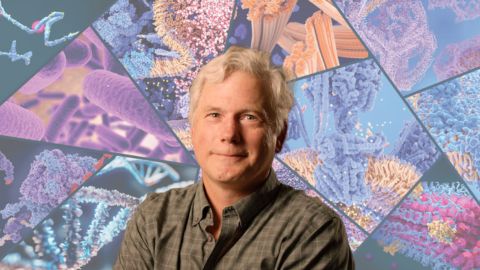Calcium channel linked to cancer drug resistance
Chemotherapy tumor resistance develops after long-term regimens of the platinum-containing anticancer drug carboplatin. Scientists have observed an enlarged cell morphology and involvement of T-type calcium channels in resistant ovarian cancer cells. Sooyun Kim and researchers at Seoul National University wanted to find out if these characteristics also relate to carboplatin resistance seen in retinoblastoma, an aggressive childhood cancer. They published their findings in a recent Journal of Biological Chemistry article.

Immunofluorescence staining and pharmacological inhibition experiments identified the Cav3.3 channel as the overexpressed calcium channel subtype that contributes to the sustained currents. The authors further showed that messenger RNA expression levels only for Cav3.3 increased after carboplatin exposure, while the levels for the other Cav3.1 and Cav3.2 subtypes slightly decreased in the resistant cells relative to the original retinoblastoma strain.
Finally, the researchers determined that treating the resistant retinoblastoma giant cells with a Cav3.3 inhibitor increased their sensitivity to carboplatin. They only observed this increase in carboplatin sensitivity in the resistant cells and not in the original retinoblastoma strain, indicating that Cav3.3 plays a specific role in drug resistance.
Cav3.3 could potentially be a target for the treatment of carboplatin-resistant retinoblastoma. Future experiments will help identify additional proteins and pathways that may connect Cav3.3 to chemotherapeutic resistance in retinoblastoma and whether the involvement of Cav3.3 over the other channel subtypes is observed in other cancers.
Enjoy reading ASBMB Today?
Become a member to receive the print edition four times a year and the digital edition monthly.
Learn moreGet the latest from ASBMB Today
Enter your email address, and we’ll send you a weekly email with recent articles, interviews and more.
Latest in Science
Science highlights or most popular articles

Pesticide disrupts neuronal potentiation
New research reveals how deltamethrin may disrupt brain development by altering the protein cargo of brain-derived extracellular vesicles. Read more about this recent Molecular & Cellular Proteomics article.

A look into the rice glycoproteome
Researchers mapped posttranslational modifications in Oryza sativa, revealing hundreds of alterations tied to key plant processes. Read more about this recent Molecular & Cellular Proteomics paper.

Proteomic variation in heart tissues
By tracking protein changes in stem cell–derived heart cells, researchers from Cedars-Sinai uncovered surprising diversity — including a potential new cell type — that could reshape how we study and treat heart disease.

Parsing plant pigment pathways
Erich Grotewold of Michigan State University, an ASBMB Breakthroughs speaker, discusses his work on the genetic regulation of flavonoid biosynthesis.

Host fatty acids enhance dengue virus infectivity
Researchers in Germany find that viral replication depends on host enzymes that synthesize lipids, revealing potential metabolic targets for antiviral intervention. Read more about this recent Journal of Biological Chemistry paper.

Antibodies inhibit hyperactive protein disposal
Researchers at the University of California, San Francisco, identify an enzyme inhibitor, offering new tools to study diseases like cystic fibrosis, neurodegeneration and cancer. Read more about this recent Journal of Biological Chemistry paper.

